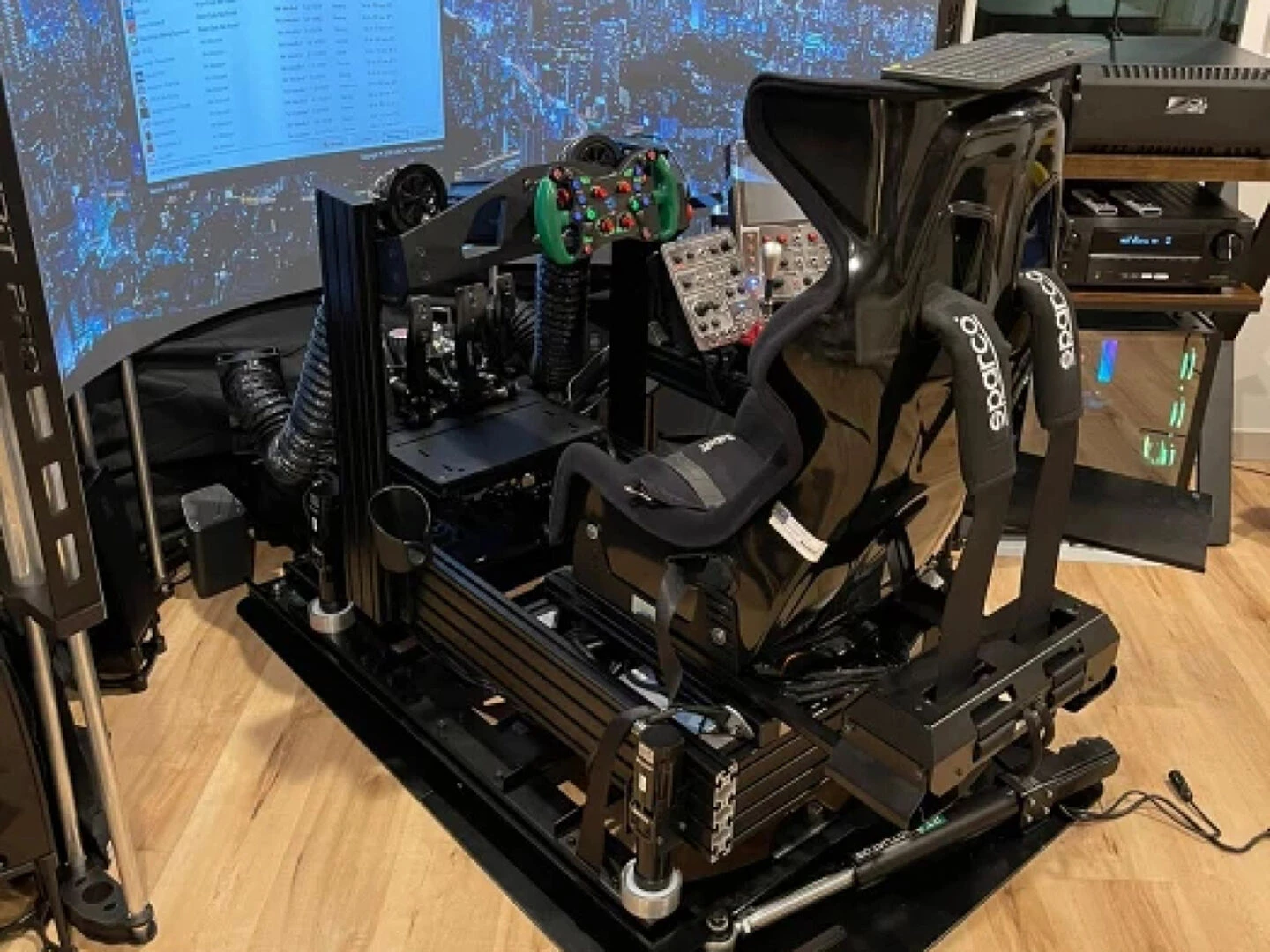Understanding DOF Motion in Sim Racing
IIn the world of sim racing, immersion in the driving experience is everything. While top-tier graphics, realistic force feedback, and quality audio all contribute to the thrill of virtual racing, it's motion simulation that takes it to another level. That's where the concept of degrees of freedom (or DOF) comes into play.
In mechanical and simulation terms, degrees of freedom refer to the number of independent ways in which a body can move. In sim racing, this refers to the number of directions your racing cockpit can move to replicate the forces you'd feel in a real car -- accelerating, braking, cornering, or even hitting a kerb. The more degrees of freedom a rig has, the more realistic and dynamic your driving experience becomes.
The basic movements: 2DOF and 3DOF systems
For most home users starting out, 2DOF or 3DOF motion systems offer a solid entry point. A 2DOF rig typically simulates pitch (tilting forward or backwards) and roll (tilting from side to side), providing a convincing sensation of braking, acceleration, and cornering.
This is the sweet spot for many hobbyists: relatively affordable, easier to install, and less demanding in terms of space and power. A 3DOF system adds 'heave' or vertical movement, creating an even more authentic simulation of weight transfer, elevation changes in track surfaces, and road bumps.
These systems often use actuators or servos mounted underneath or behind the cockpit frame to move the platform. Quality systems are compatible with popular PC-based sims like Assetto Corsa, iRacing, and rFactor 2. The movements are synchronised with telemetry data from the sim software, translating virtual G-forces into physical sensations.
Advanced systems: 4DOF to 6DOF and beyond
For serious enthusiasts or professional-level simulators, systems with 4DOF, 5DOF, or full 6DOF capabilities bring the ultimate in motion fidelity. These additional degrees of freedom simulate more complex movements:
Yaw (rotation around the vertical axis) simulates the car's rear sliding out in oversteer or the body shifting during tight corners.
Surge (forward and backwards motion) provides a more genuine sense of throttle and brake input, thereby enhancing realism.
Sway (side-to-side lateral movement) mimics side loads during cornering.
A 6DOF motion rig can replicate all six of these movements – pitch, roll, heave, yaw, surge, and sway – allowing a driver to experience the same physical cues a real race car would provide. These are often used by professional drivers for training, as well as sim racing centres. However, they come with high costs, complex installation, and significant space requirements.
Technical considerations and integration
If you're considering a motion platform for your sim rig, it's vital to ensure compatibility with both your existing hardware and the sim software you use. Most motion systems run through dedicated control software that maps game telemetry to actuator responses. Popular motion software platforms support a wide range of games and offer tuning options for motion intensity, filtering, and latency reduction.
Another key factor is latency. Latecyis the delay between an action in the sim software and the motion rig's physical response to it. High-end systems typically have latencies of less than 20 milliseconds, which makes the driving feel immediate and seamless.
The weight capacity of your rig is also critical: some platforms struggle with heavier builds, especially when using direct-drive wheels, high-end pedal sets, or multiple monitors. Check load specs and frame rigidity before committing to an upgrade.
Is it worth it for home racing?
The decision to invest in a motion platform, whether it's a basic 2DOF or a fully-fledged 6DOF setup, depends on your goals, space, and budget. A good 2DOF system can dramatically enhance immersion and improve car control, particularly in learning how a vehicle behaves under load. For competitive racers, the physical cues from motion rigs can lead to improved performance over time, especially in endurance events or when training for real-world driving conditions.
HHowever, a motion platform is not essential for everyone. Many sim racers focus on improving their wheels, pedals, or visual setups instead. For some, too much motion can be even more distracting. Ultimately, understanding degrees of freedom is about knowing what kind of realism you want to simulate and how deeply you're willing to delve into it. For those looking to blur the lines between virtual and reality, mastering motion through the right DOF system could be the most exciting upgrade you make.
About Us
Race@home launched in 2020, offering immediate shipment of high-end sim hardware to frustrated customers. Our acclaimed LowRider 5DOF and new LowSlider 6DOF platforms prioritise compact excellence.
Contact Us
raceathome@gmail.com
+441163326679
Leicester, United Kingdom
WhatsApp
Instagram

